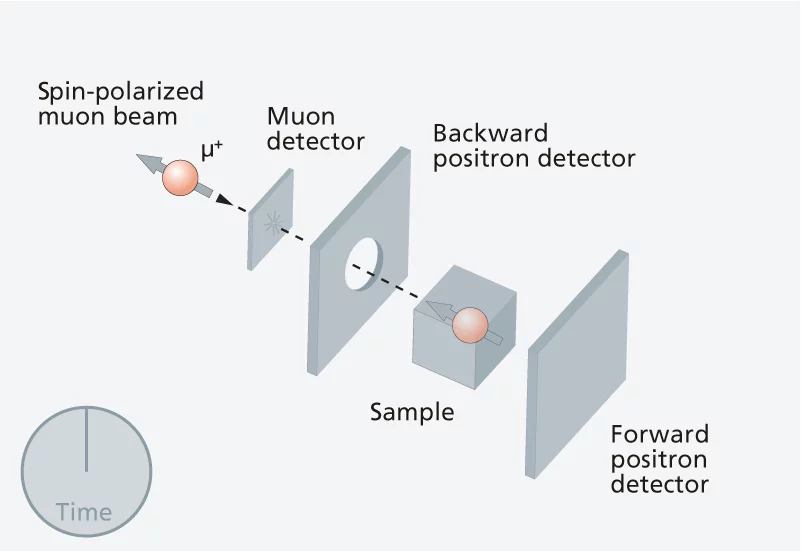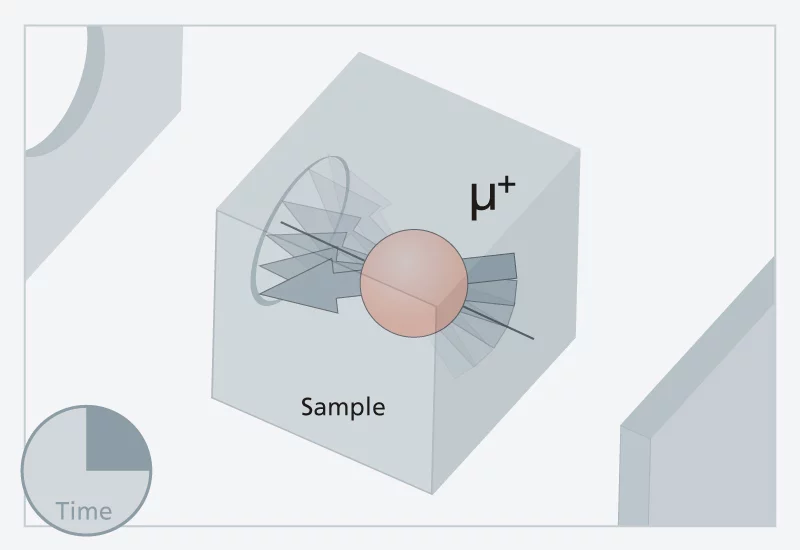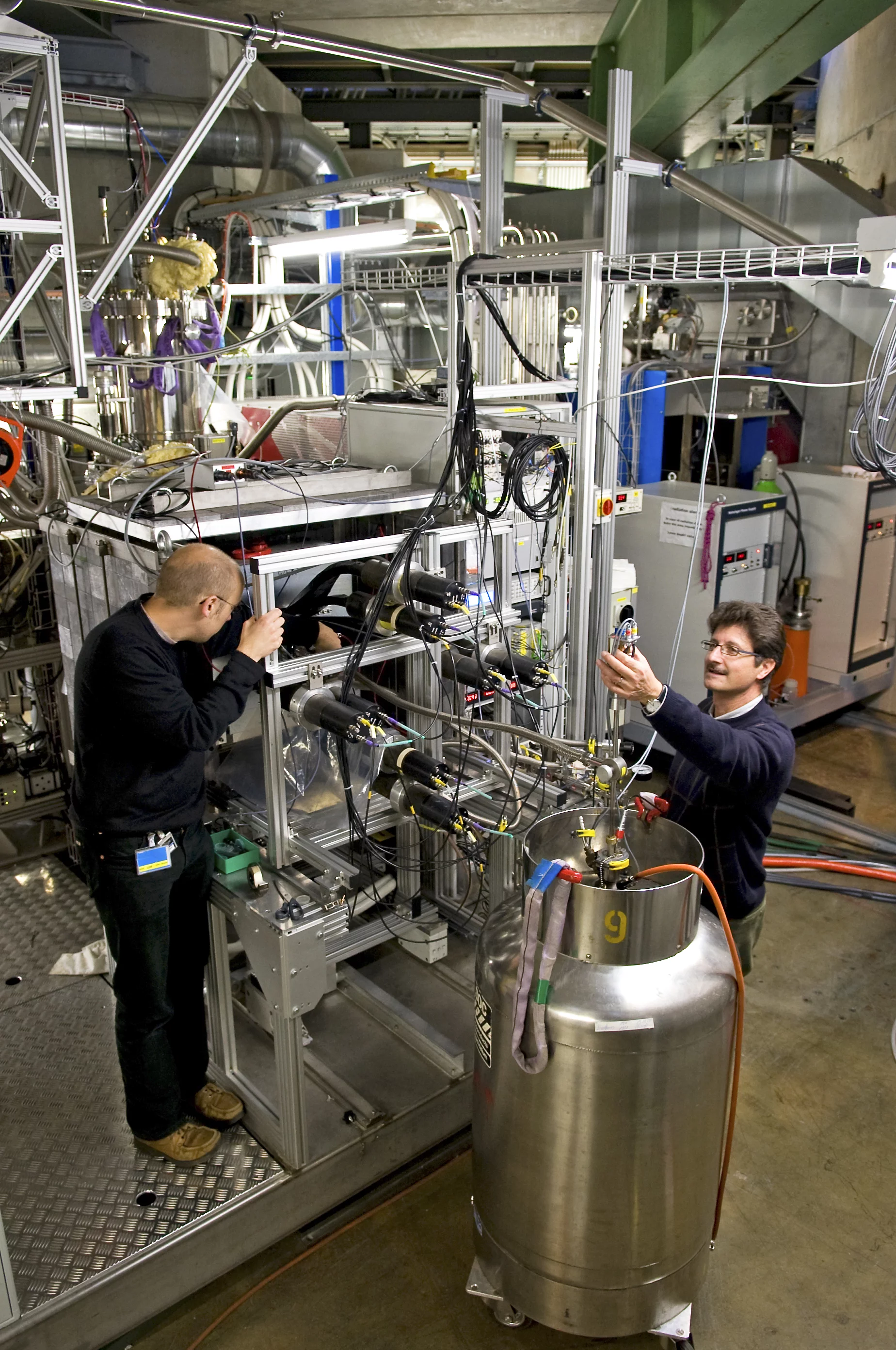Muons are used by physicists to determine magnetic fields within a solid. Muons for solid-state research are only available at two sites in Europe – the Paul Scherrer Institute (Swiss muon source SμS) and the ISIS research centre near Oxford in England. The experimental opportunities with slow muons offered by PSI are unique. Research with muons is, for example, very significant in tests on high-temperature superconductivity and new magnetic materials. Muon experiments are often supplemented with those employing neutrons and synchrotron light.
What are muons?
Muons are electrically charged elementary particles. Particle physicists regard muons as heavy electrons – they have basically the same physical properties as electrons except for their mass being 207 times larger. There are both positively and negatively charged muons. Muons are unstable particles and decay with a half-life of a few millionths of a second. Since they only live such a short time, muons are not a component part of matter. And yet they are also omnipresent in our world, being components of cosmic radiation and raining down on us all the time.Experiments with muons
Muons are primarily used at PSI to determine the local magnetic fields within different materials. For this purpose, a beam of positively charged muons is fired from PSI's SμS muon source into the sample being investigated. Some of the muons become lodged in the sample – frequently at so-called interstices, i.e. fixed spots as far away as possible from surrounding atoms. At these points, the muons can then indicate the local magnetic field.
This is possible as a result of the muon's own spin, to which the particle owes its magnetic moment, i.e. it behaves like a small bar magnet. The magnetic moments of all muons created in the SμS muon source point in the same direction – hence the beam of muons is polarised – and it is thanks to this characteristic that muons can be used for these experiments.
When a muon is inserted into a magnetic field, its axis begins to rotate. This is similar to when a child's spinning top tilts over and, while it continues to rotate on its own axis, its rotational axis turns slowly at the same time, with the rotation being quicker the stronger the external magnetic field.
After a few millionths of a second, a muon decays into a positron and two neutrinos, with the positron always travelling in the direction of the spin axis of the muon at the moment of decay. If the positron's flight direction is observed for millions of decays of this kind, it becomes possible to determine the speed of the muon spin precession, and hence draw conclusions on the magnetic field within the sample.
Slow or Low Energy Muons (LEM) are only available for experiments at the Paul Scherrer Institute. With the aid of slow muons of this kind, it is possible to measure magnetic fields in thin-film structures, as used nowadays in a great variety of electronic equipment, such as, for example, the read heads of computer hard-disk drives. Of decisive importance in this connection is the fact that the faster the muons are, the deeper they lodge in the sample. Muons, coming directly from a muon source, are so fast that they would simply travel through thin films without supplying any information on the film's properties. This is in contrast with slow muons, which are completely decelerated in a thin film. Since it is also possible to vary the speed of muons, they can thus be used to examine magnetic fields at various depths – from a few to several hundred nanometres.
Slow muons are obtained by initially decelerating muons arriving at high speed in a layer of frozen inert gas and then accelerating them with the aid of an electric field, with a stronger field leading to faster muons.
Additional Information
- SμS muon source
Producing muons at PSI - Research using neutrons and synchrotron light
Experiments with these probes often complement investigations with muons. - Laboratory for Muon Spin Spectroscopy
Website of PSI's muon lab




